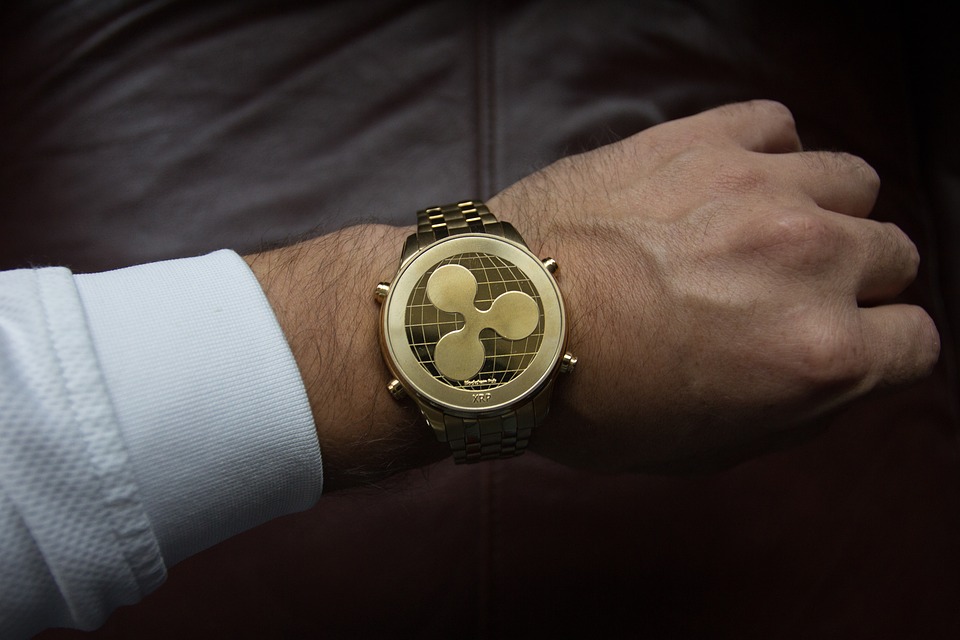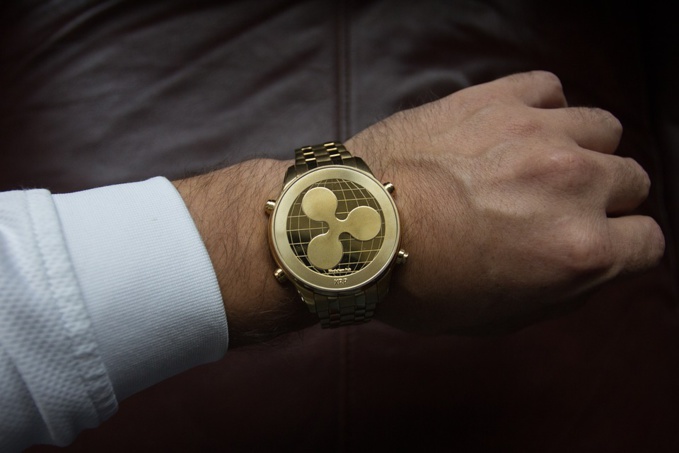Bitcoin has become one of the most profitable assets of 2017, but its shadow hides a whole bunch of various crypto-currencies. Many investors look at altcoins in order to diversify the portfolio or in search of higher yields. At that, Ripple grew even faster than Bitcoin last year. Nowadays, when crypto-currencies have become popular, it is very important to understand how the token that you are investing in works. Here is a selection of facts about Ripple, which may be unknown even to successful bitcoin investors.
1. Ripple does not really exist
In fact, this is part of the name of the company Ripple Labs (OpenCoin until 2013). And, of course, it is the network created by this company and designed for processing payments by financial institutions. But the token, released by Ripple Labs and functioning on the Ripple network, is formally called XRP. However, since the word Ripple is easier to pronounce than the abbreviation of three consonants, it is likely that this name will remain popular.
2. The Ripple network can be used without XRP
There are systems that cannot operate without the corresponding token, but this does not apply to Ripple. Once connected to the network, a financial institution can conduct instant, reliable and cheap payments for customers. Ripple Labs explains that XRP helps companies further reduce costs, as well as gain access to new markets. Global transfers in real time help avoid the long wait that is typical for existing transfer systems, and payment providers can use XRP to facilitate transfers during which currency exchange takes place.
3. Ripple Labs owns more than half of all XRPs
At the beginning of 2018, Ripple Labs owned approximately 60 billion XRP, while all of these tokens could be issued 100 billion. That is to say, the company owns about 60% of the currency. Some believe that in this regard, you can consider the control of XRP in the Ripple network centralized. This is not suitable for some activists as they prefer unconditionally decentralized systems. Ripple Labs also notes that even in the absence of centralized control, the presence of large players in the Bitcoin network and other networks leads to an actual oligopoly. Moreover, the company believes that their plan for controlled emission of XRP gives it an advantage.
4. More and more XRP enters the market every month
In late 2017, Ripple Labs placed 55 billion XRP on a conditional deposit (escrow), creating 55 separate contracts, and within the next 55 months, these contracts will expire one per month, throwing onto the market another billion XRP. If Ripple Labs does not use all of the billions, the remainder will return to the escrow with a new date and "stand in the queue", that is, it will be "released" when the previous contracts expire. Ripple Labs itself says that they spent 300 million XRP in the last year and a half the average for the month. The implementation of all contracts will take more than 15 years at the same pace, and this should calm those who are worried that an amount, which would lead to currency depreciation, can be released to the market at once.
5. Ripple used to provide its own XRP-wallet
First, Ripple created a website that allows buying, selling and storing XRP, and RippleTrade.com had a digital wallet for XRP transactions. In early 2016, Ripple Labs decided to close this service and agreed with a third-party company GateHub on transferring accounts from RippleTrade. Ripple Labs decided to focus on development of international financial instruments, and users can now choose from several third-party services. Ripple's popularity has grown during 2017, but many investors only recently heard about this network and the tokens used in it. Nevertheless, since the speed of international financial transfers is an increasingly important factor, Ripple can be seen as an opportunity to make money on changes in the payment industry.
source: fool.com
1. Ripple does not really exist
In fact, this is part of the name of the company Ripple Labs (OpenCoin until 2013). And, of course, it is the network created by this company and designed for processing payments by financial institutions. But the token, released by Ripple Labs and functioning on the Ripple network, is formally called XRP. However, since the word Ripple is easier to pronounce than the abbreviation of three consonants, it is likely that this name will remain popular.
2. The Ripple network can be used without XRP
There are systems that cannot operate without the corresponding token, but this does not apply to Ripple. Once connected to the network, a financial institution can conduct instant, reliable and cheap payments for customers. Ripple Labs explains that XRP helps companies further reduce costs, as well as gain access to new markets. Global transfers in real time help avoid the long wait that is typical for existing transfer systems, and payment providers can use XRP to facilitate transfers during which currency exchange takes place.
3. Ripple Labs owns more than half of all XRPs
At the beginning of 2018, Ripple Labs owned approximately 60 billion XRP, while all of these tokens could be issued 100 billion. That is to say, the company owns about 60% of the currency. Some believe that in this regard, you can consider the control of XRP in the Ripple network centralized. This is not suitable for some activists as they prefer unconditionally decentralized systems. Ripple Labs also notes that even in the absence of centralized control, the presence of large players in the Bitcoin network and other networks leads to an actual oligopoly. Moreover, the company believes that their plan for controlled emission of XRP gives it an advantage.
4. More and more XRP enters the market every month
In late 2017, Ripple Labs placed 55 billion XRP on a conditional deposit (escrow), creating 55 separate contracts, and within the next 55 months, these contracts will expire one per month, throwing onto the market another billion XRP. If Ripple Labs does not use all of the billions, the remainder will return to the escrow with a new date and "stand in the queue", that is, it will be "released" when the previous contracts expire. Ripple Labs itself says that they spent 300 million XRP in the last year and a half the average for the month. The implementation of all contracts will take more than 15 years at the same pace, and this should calm those who are worried that an amount, which would lead to currency depreciation, can be released to the market at once.
5. Ripple used to provide its own XRP-wallet
First, Ripple created a website that allows buying, selling and storing XRP, and RippleTrade.com had a digital wallet for XRP transactions. In early 2016, Ripple Labs decided to close this service and agreed with a third-party company GateHub on transferring accounts from RippleTrade. Ripple Labs decided to focus on development of international financial instruments, and users can now choose from several third-party services. Ripple's popularity has grown during 2017, but many investors only recently heard about this network and the tokens used in it. Nevertheless, since the speed of international financial transfers is an increasingly important factor, Ripple can be seen as an opportunity to make money on changes in the payment industry.
source: fool.com



















